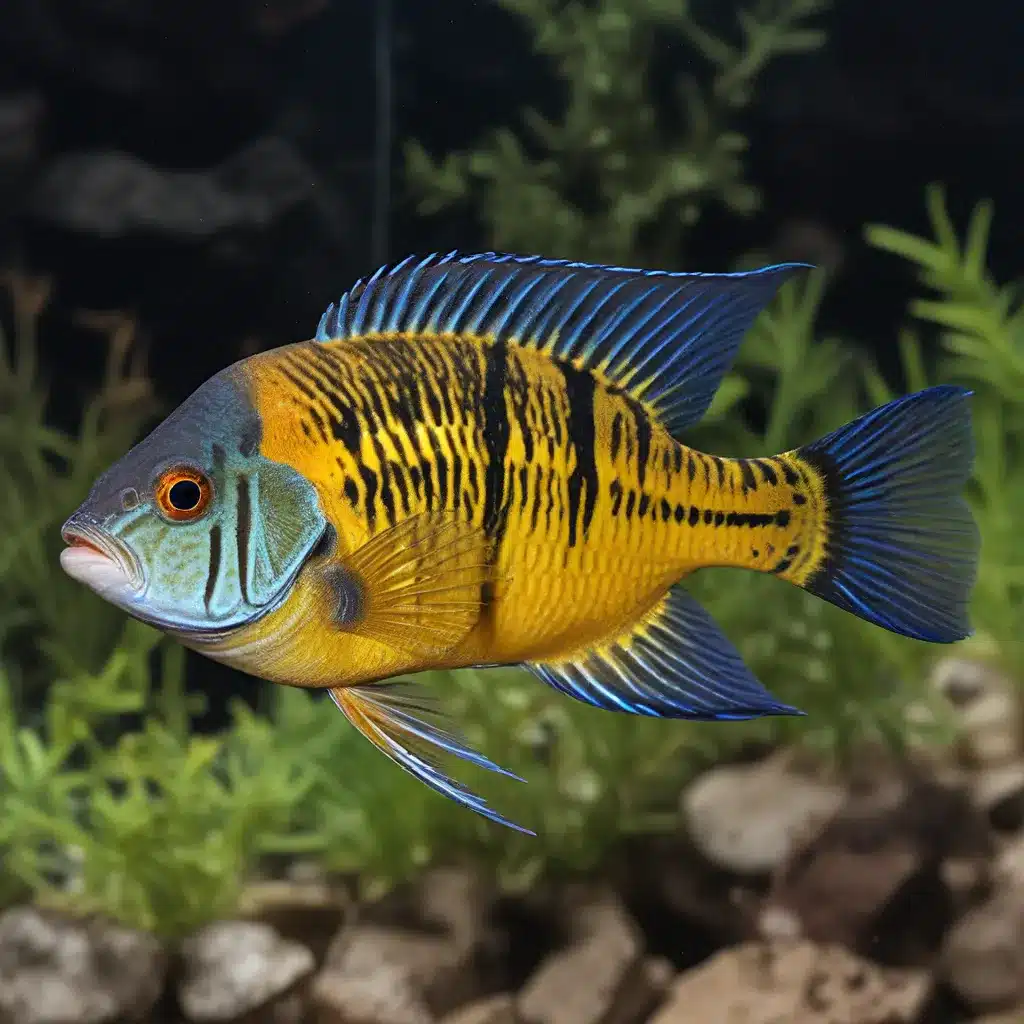
In the captivating realm of aquarium keeping, few fish groups capture the imagination like the diverse and vibrant cichlids. These remarkable creatures, found in various aquatic habitats across the globe, offer aquarists a wealth of opportunities to create stunning and engaging underwater ecosystems. Whether you’re a seasoned enthusiast or a newcomer to the hobby, this comprehensive guide will delve into the intricate world of cichlid care, aquascaping techniques, and water management strategies to help you cultivate a thriving cichlid community.
Understanding Cichlid Diversity
Cichlids are a fascinating and highly diverse family of freshwater fish, boasting an impressive array of species, colors, and behavioral traits. From the vibrant hues of Malawi’s Mbuna cichlids to the unique mouth-brooding habits of South American Geophagus, this family of fish showcases a remarkable adaptability that has captivated aquarists worldwide. Researching the diverse origins and ecological niches of cichlids is crucial for understanding their specific care requirements and ensuring their long-term well-being in the aquarium.
Identifying Cichlid Species and Their Needs
When it comes to cichlid care, one size does not fit all. Each species has unique dietary, water parameter, and social requirements that must be meticulously addressed to create a thriving aquarium environment. For instance, the peaceful Discus cichlids from the Amazon basin thrive in soft, acidic water conditions, while the feisty Mbuna cichlids of Lake Malawi prefer harder, alkaline waters and a more structured social hierarchy.
Careful research and planning are essential when selecting cichlid species for your aquarium. Consider factors such as adult size, temperament, and compatibility to ensure a harmonious community. Remember, some cichlids can be aggressive and may not coexist peacefully with more passive tank mates. Consulting reputable online resources or seeking guidance from experienced aquarists can greatly assist in making informed decisions about your cichlid community.
Aquascaping for Cichlid Habitats
The aquascaping choices you make for your cichlid aquarium can have a profound impact on the overall health and behavior of your fish. Cichlids often thrive in environments that mimic their natural habitats, providing ample hiding spots, territory markers, and opportunities for natural behaviors like spawning and foraging.
Recreating Natural Habitats
When designing a cichlid-specific aquascape, aim to recreate the geological and botanical features found in their native environments. For example, Malawi Mbuna cichlids would benefit from a rocky, cave-filledscape with live aquatic plants strategically placed to provide shelter and spawning sites. In contrast, Amazonian Discus cichlids would flourish in a soft, planted habitat with driftwood and leaf litter, reminiscent of their natural river basin homes.
Carefully selecting the right substrates, décor, and plant species can significantly enhance the overall aesthetic and functionality of your cichlid aquarium. Incorporate a variety of textured rocks, driftwood, and carefully chosen live plants to create a visually striking and ecologically balanced environment.
Aquascaping Techniques for Cichlids
Aquascaping for cichlids often requires a more structured and intentional approach compared to other community tank setups. Cichlids are known for their territorial behaviors and need ample hiding spots and line-of-sight breaks to coexist peacefully. Strategically placing décor, such as rocks, caves, and driftwood, can help establish defined territories and reduce aggressive interactions.
Additionally, incorporating strategically placed live plants can serve multiple purposes in a cichlid aquarium. Not only do they provide natural cover and spawning sites, but they also contribute to the overall water quality and nutrient cycling within the system. Carefully selecting hardy, fast-growing plant species that can withstand the often-boisterous behavior of cichlids is crucial for maintaining a thriving aquatic ecosystem.
Water Quality and Management
Maintaining optimal water quality is crucial for the long-term health and wellbeing of your cichlid aquarium. Cichlids are generally sensitive to fluctuations in water parameters, and their specific needs can vary widely based on the species and their native habitats.
Understanding Cichlid Water Requirements
Cichlids from different geographical regions often have distinct water parameter preferences. For instance, Malawi Mbuna cichlids thrive in hard, alkaline waters with a pH between 7.8 and 8.6, while Amazonian species like Discus prefer softer, slightly acidic conditions with a pH range of 6.0 to 7.0.
Carefully monitoring and maintaining the appropriate water parameters, such as temperature, hardness, and pH, is essential for supporting the overall health and well-being of your cichlid community. Regular water testing and partial water changes can help ensure that your aquarium’s water quality remains within the optimal range for your chosen cichlid species.
Filtration and Water Circulation
Cichlids are generally active and produce a significant amount of waste, necessitating a robust filtration system to maintain water clarity and minimize the buildup of toxic compounds. Choosing a high-quality filter, such as a canister or hang-on-back model, along with adequate water circulation, can help create a healthy, well-oxygenated environment for your cichlids to thrive.
In addition to mechanical and biological filtration, the incorporation of chemical filtration media, such as activated carbon or phosphate removers, can further enhance water quality by removing discoloration, odors, and harmful compounds. Regular maintenance, including filter media replacement and cleaning, is crucial for ensuring the long-term effectiveness of your filtration system.
Conclusion
Exploring the diverse and captivating world of cichlids is a rewarding journey for aquarium enthusiasts of all levels. By understanding the unique care requirements, aquascaping techniques, and water management strategies, you can create a vibrant and thriving cichlid community that showcases the beauty and fascinating behaviors of these remarkable fish. Whether you’re drawn to the vibrant hues of Malawi’s Mbuna or the serene grace of Amazonian Discus, embracing the diversity of cichlids can open up a new realm of aquarium adventures and endless possibilities for your underwater oasis.

